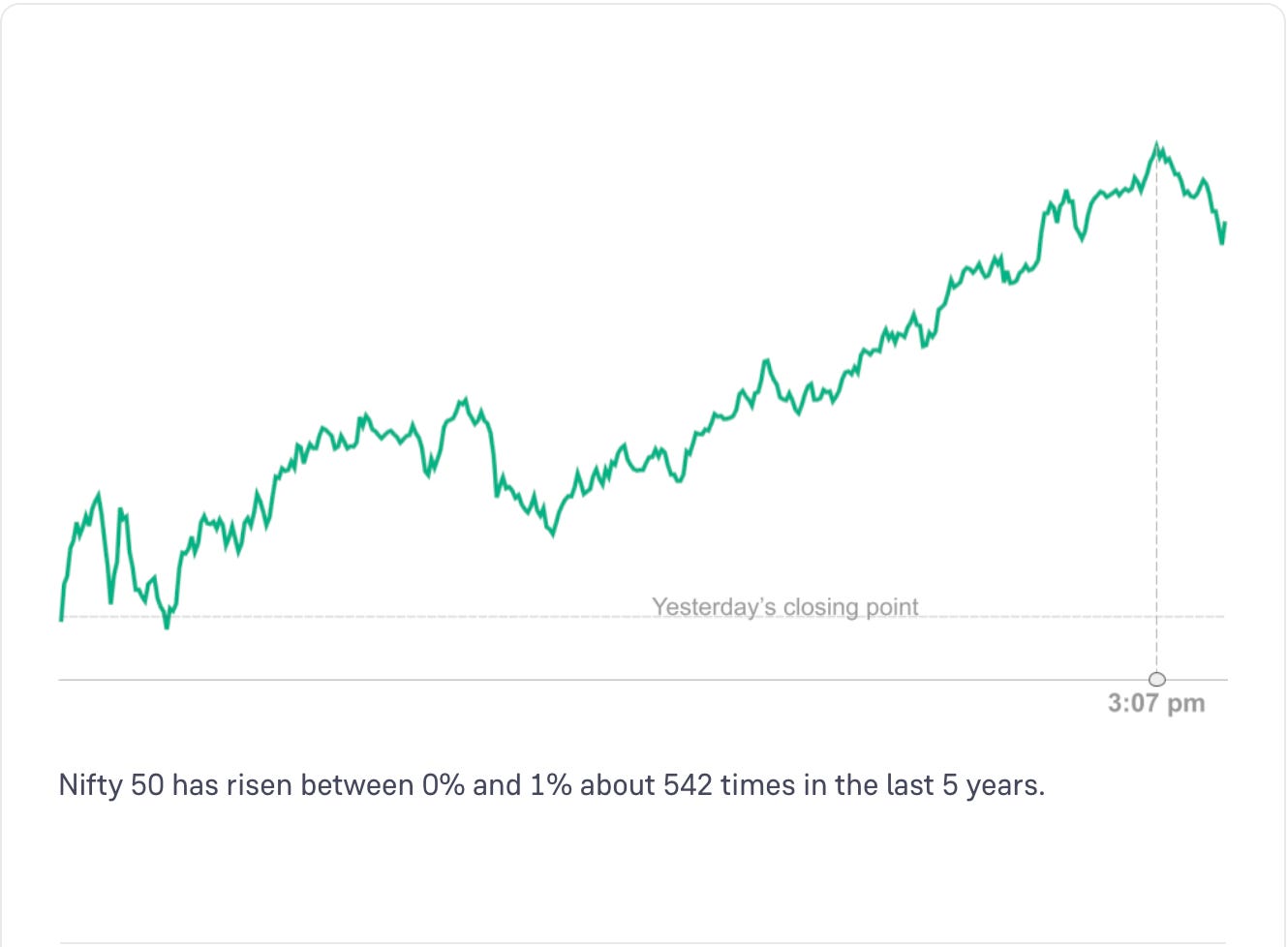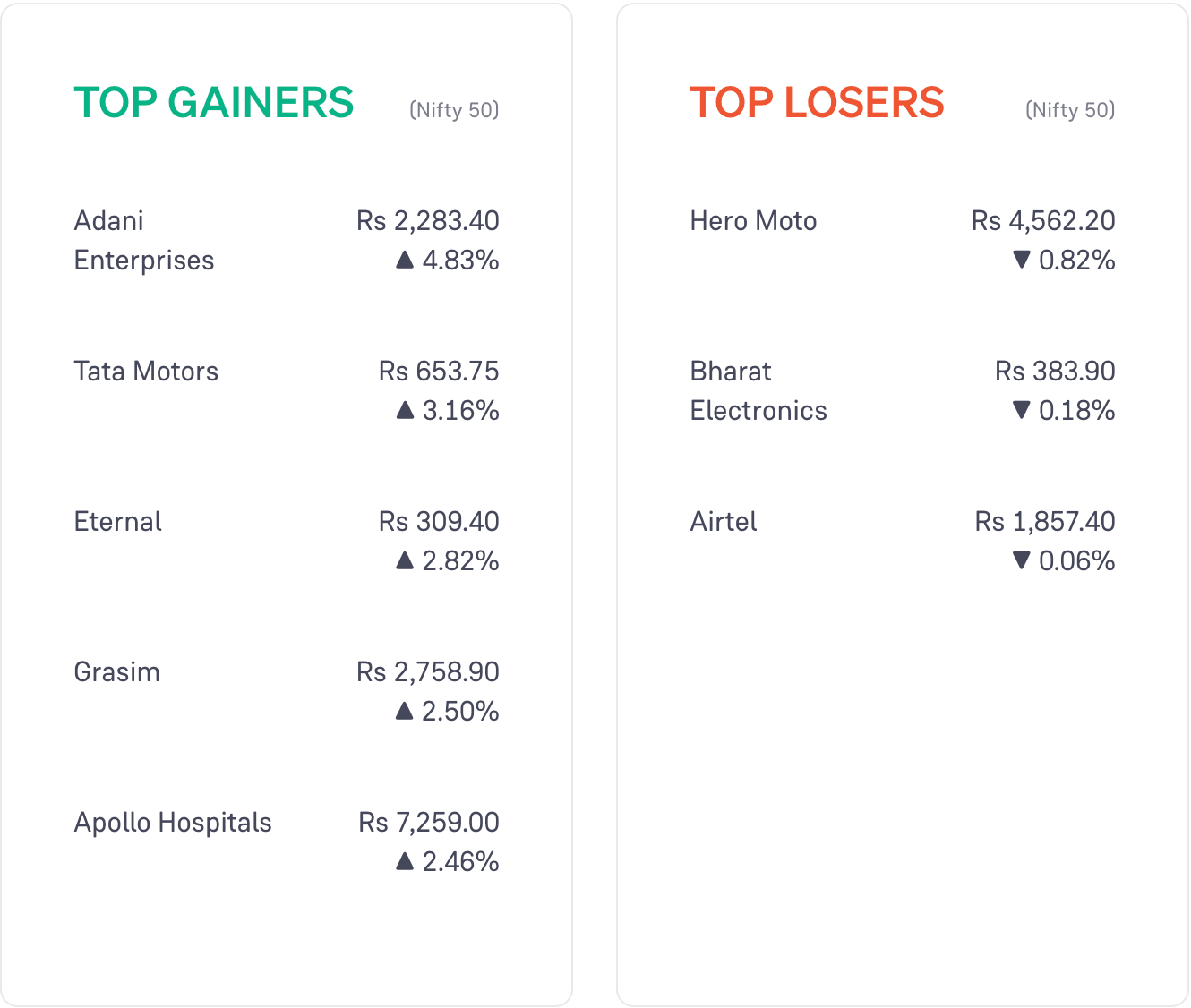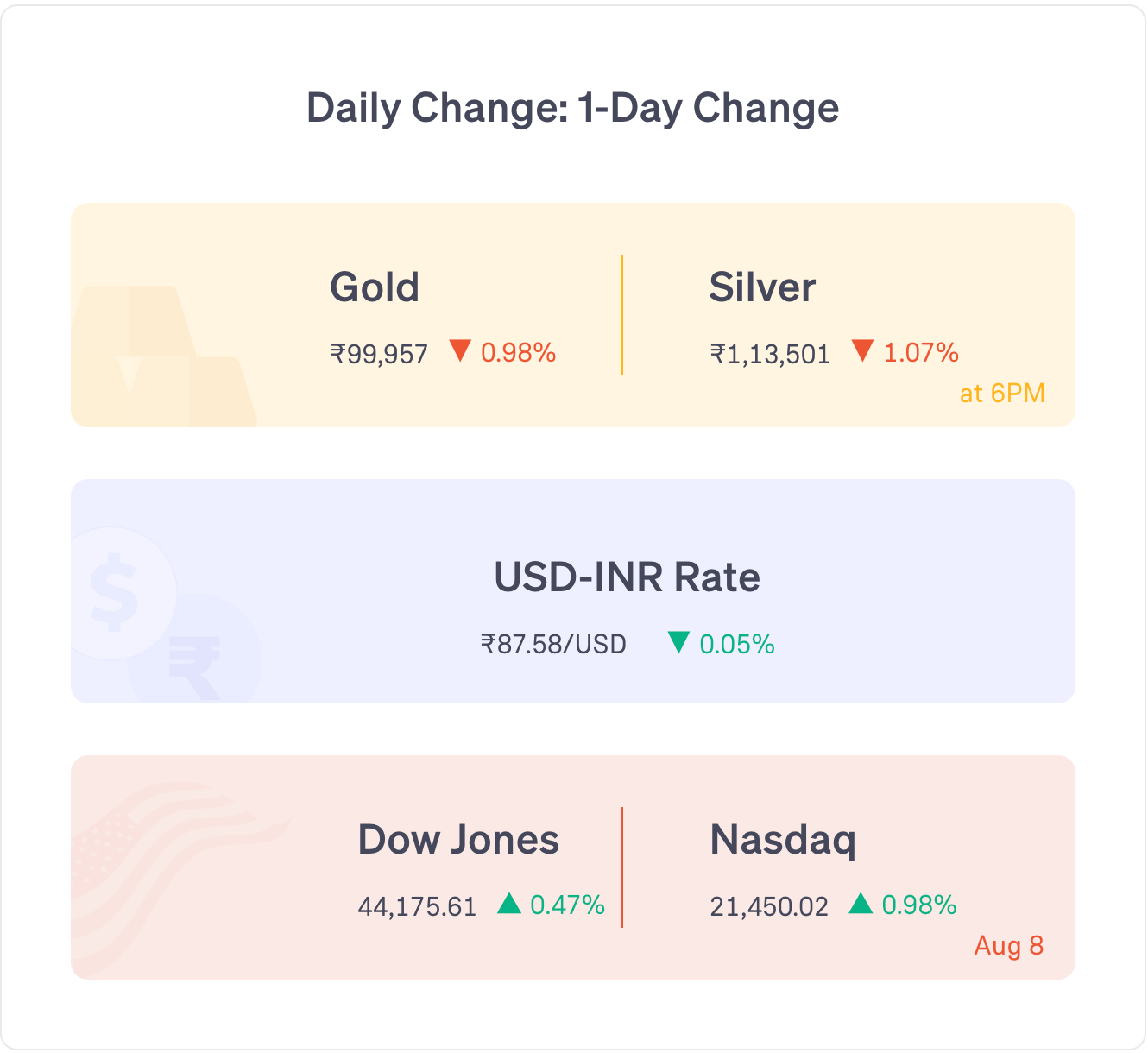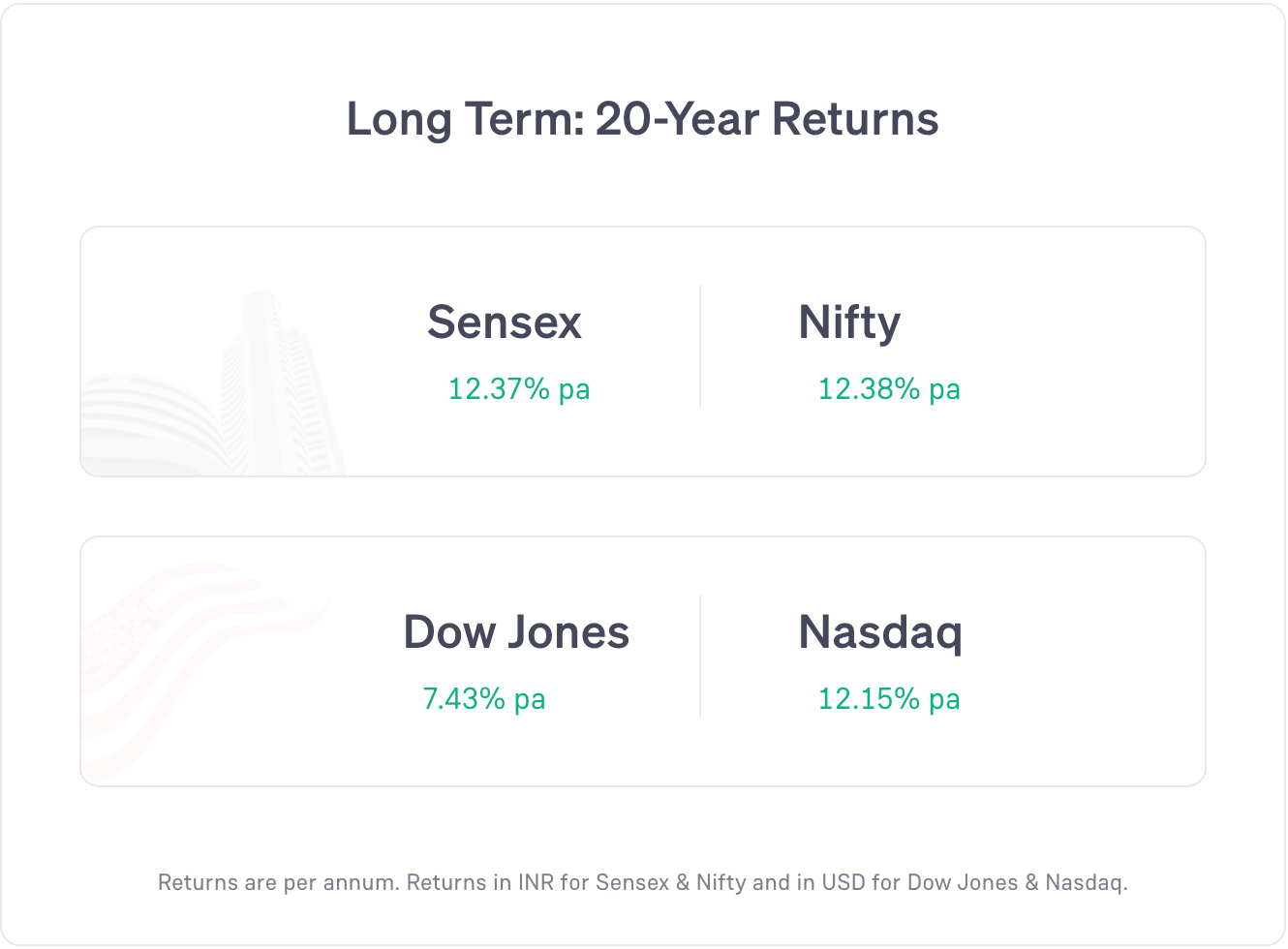Record high inflows in equity MFs, Bluestone IPO, L&T wins ultra-mega order, & more — Daily Digest
Monday, 11 August 2025
Markets opened near Friday’s closing point.
Nifty 50 rose throughout the day, likely due to strong buying after multiple weeks of falls. The rise was supported by positive global sentiments, buying in major PSU bank stocks, and strong mutual fund inflow news.
All sectors’ stocks rose today. PSU bank stocks and realty stocks rose the most.
There are only 3 stocks in Nifty 50 that fell today. Hence, there are only 3 stocks in the ‘Top Losers’ section.
Global markets: US and most Asian markets rose. Most European markets were flat (as of 6 pm IST).
News
The revised version of the Income Tax Bill was introduced today. It replaces the old 1961 Income Tax law with a simpler version. The new Income Tax Bill incorporates most of the recommendations made by the Select Committee.
Equity mutual funds saw a record high net inflow of Rs 42,702 crore in July (compared to Rs 23,587 crore in June). Debt funds saw a net inflow of Rs 1.07 lakh crore in July (compared to a net outflow of Rs 1,711 crore in June): AMFI.
Bluestone Jewellery IPO has been subscribed 0.39 times. Retail subscription: 0.38 times. Open for subscription till 13 Aug.
Stocks Updates
L&T: won an ultra-mega order contract, worth over Rs 15,000 crore, from Adani Power to build 6,400 MW of thermal power capacity.
Adani Enterprises: company subsidiary, Adani Defence & Aerospace, through its 50:50 JV ‘Horizon Aero Solutions’ with Prime Aero, has signed a deal to fully acquire Indamer Technics, a private aircraft MRO provider in India.
IRFC: refinanced Rs 2,539 crore for Angul Sukinda Railway Ltd to meet its financial commitments and free resources for expansion, capacity upgrades, and operational improvements.
Zydus Lifesciences: received US FDA approval for Diltiazem Hydrochloride Tablets used to relax blood vessels. The tablets had annual sales of $13.9 million in the US.
Lodha Developers: board approved raising funds through non-convertible debentures via private placement.
Word of the Day
ARPU
It is the average money a company earns from each customer over a specific period (usually monthly/yearly)
ARPU = Average Revenue Per User
It is mostly used in subscription-based businesses (example: telecom, internet providers, OTT services, etc).
ARPU is mostly used to evaluate how telecom companies are doing and compare with competitors.
A higher ARPU means customers are willing to spend more and vice versa.
6 Day Course
Theme: illiquid shares
Day 1: Monday
Illiquid means something that cannot be sold or bought.
Such shares are called illiquid shares. Many shares are actually not illiquid — but are ‘less liquid’.
This means they can be bought and sold but not as easily. Which means, there are fewer chances to buy and sell those shares.
Let’s say a company’s shares have no buyers/sellers for 1 week.
For 1 week, the shares were not liquid or were illiquid.
1 week later, a few buyers/sellers were present in the markets. At that point, the shares become ‘liquid’.
This week, we will go deep into illiquid and low-liquidity shares — and all the various factors affecting them.
Featured Question
Q. “It's seen that Mutual Funds give return of 10 to max. 15% which is just a little more than FD's. How we can say it is wealth building investment. Too many fortifies of different financial institutions further reduces return of common man's investment ? Thanks for providing platform for individual investors like me”
Your observation about long-term returns of mutual funds is largely correct.
Different types of mutual funds give different returns. The range mentioned by you (10% to 15%) is roughly accurate.
FDs these days are giving around 6-7% per annum returns.
If we look at historic returns of good mutual funds, many mutual funds have given 10-15% per annum which is nearly double of FD returns.
Equity mutual funds have a lower rate of tax than FDs too — so the money that reaches the investor is higher even after taxation.
If a return is “high” or “not high” is subjective.
You might feel 15% per annum is only slightly more than FD returns.
This happens in the case of investors who are able to generate much higher returns from investing in stocks themselves or from other sources (like their own business).
For most other investors, a return of 10% to 15% is quite good. Few other investment options have been able to give higher returns than that.
Some very good mutual funds have given even higher returns than 15% per annum over the long term.
Now, let us look at the possible difference in returns:
Let’s say you are investing Rs 20,000 per month in FD (also called RD).
You are also investing the same amount of money in a mutual fund (SIP) giving a return of 12% per annum.
In 15 years, FD or RD will grow to: Rs 62 lakh
In 15 years, SIP will grow to: Rs 95 lakh
Here we can see the difference.
But we have not taken into account the inflation rate. Let’s factor inflation into this. Assume inflation at 5% per annum.
After inflation, FD gives a return of (7 - 5 = 2%)
After inflation, SIP gives a return of (12 - 5 = 7%)
Here, we can see the difference in real returns is quite big — more than 3 times higher.
If you put these returns in a monthly investment calculator, the difference will be even more stark.
Did you like this edition?
Leave a feedback here!






